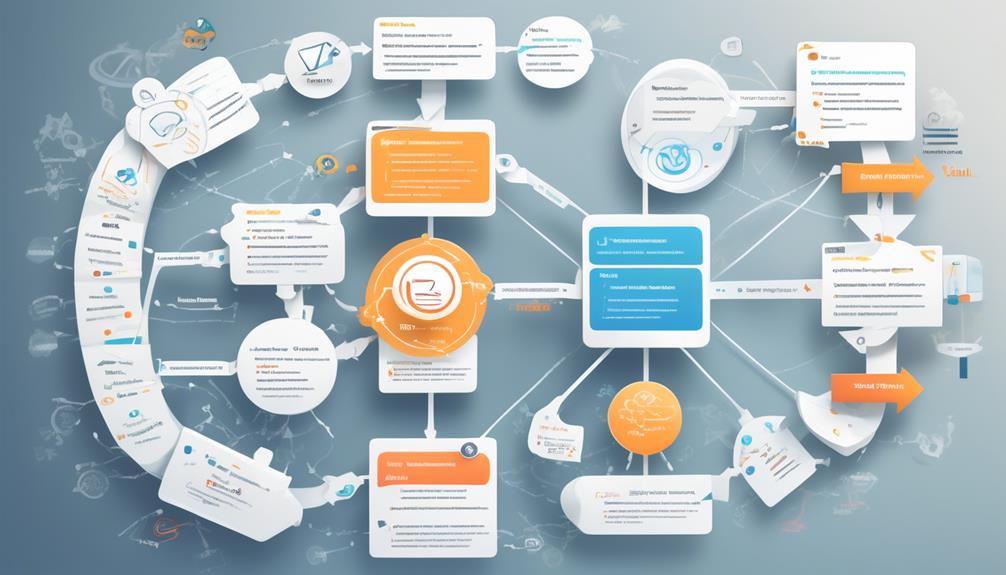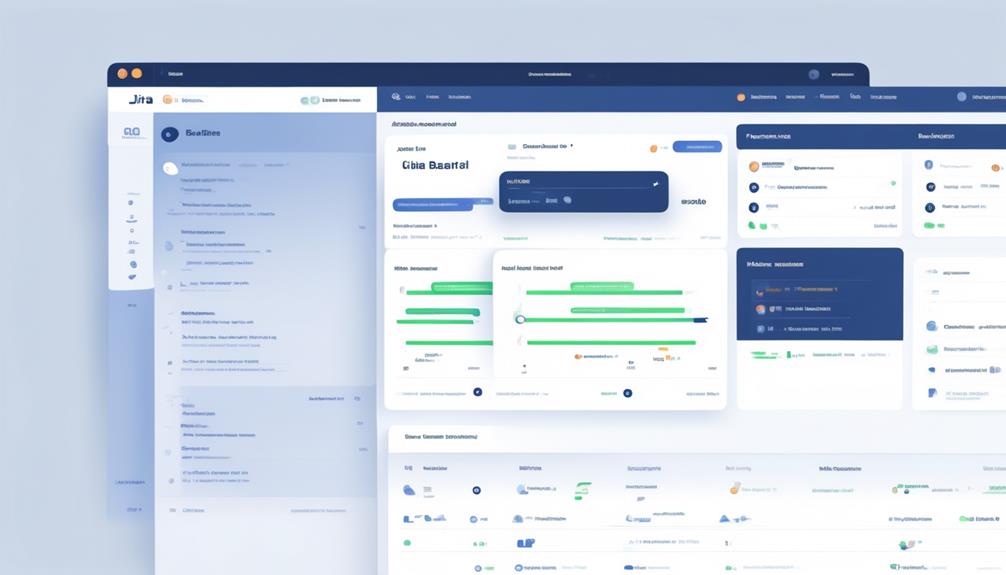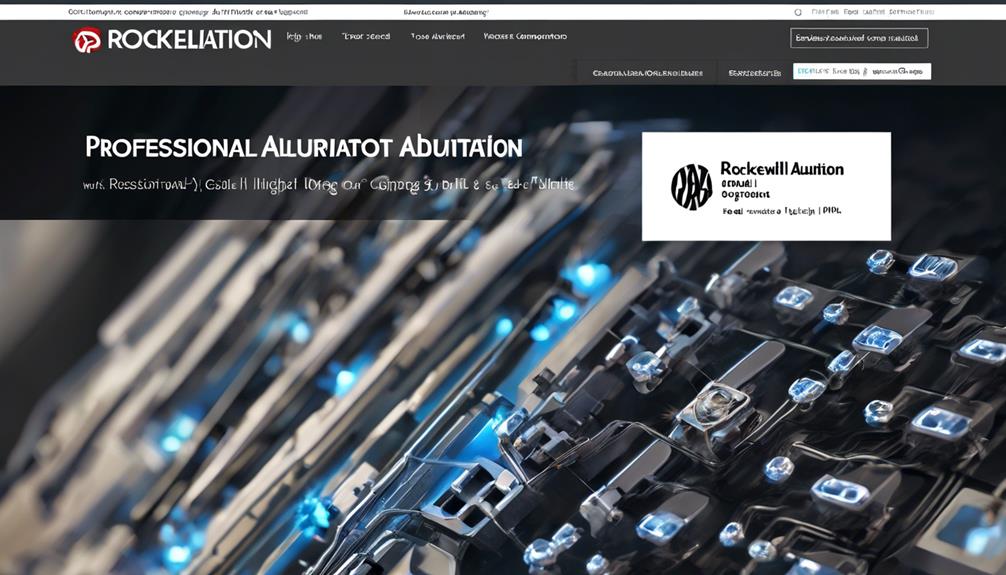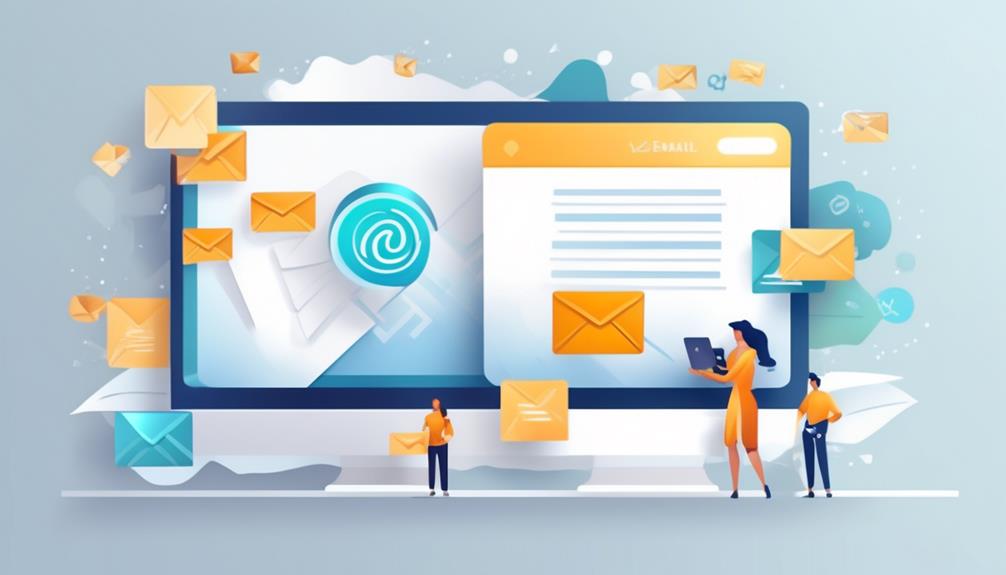In the vast ocean of emails filling our inboxes, it can sometimes seem like we’re submerged in endless tasks and replies. What if, however, there existed a method to simplify how we handle our emails and reclaim precious time?
Google Email Automation offers a solution to this modern-day dilemma, providing users with the tools to automate repetitive tasks and streamline their email communications. From setting up automated follow-ups to organizing emails with efficiency, the potential benefits are vast.
But how exactly does this automation work, and what are the best practices for implementing it effectively? Join us as we explore the world of Google Email Automation and uncover its potential to revolutionize our email routines.
Key Takeaways
- Google Email Automation streamlines email processes, saving time and increasing efficiency.
- It automates repetitive tasks like follow-ups and responses, ensuring consistency in communication.
- Gmail Automation techniques include leveraging Google's native features and integrating with tools like Gmelius.
- Ways to automate Gmail include utilizing filters, scheduling email sending, and using smart reply suggestions.
Gmail Automation Techniques
Gmail's automation techniques empower users to streamline email workflows and boost productivity with advanced tools and integrations. By leveraging Google's native automation features and integrating with tools like Gmelius, users can optimize their email management to save time and increase efficiency. Automation allows users to automatically handle repetitive tasks, such as sending follow-up emails or responding to inquiries, freeing up valuable time and reducing the burden on the inbox.
One key aspect of Gmail's automation is the ability to create email templates, ensuring consistency and saving time when crafting frequently sent emails. Additionally, Gmail sequences and drip campaigns enable users to automate email responses and actions, enhancing lead management and nurturing. This level of automation not only saves time but also ensures that important communication processes are carried out consistently and effectively.
Furthermore, automation techniques can be applied to email marketing campaigns and internal communications, allowing for more streamlined and effective processes. By automating these workflows, users can focus on higher-value tasks while still maintaining timely and professional communications.
Gmail's automation capabilities truly revolutionize email management, offering powerful tools to enhance productivity and effectiveness.
Ways to Automate Gmail

We can enhance our efficiency and organization by utilizing Gmail's filters to automate the categorization and prioritization of incoming emails.
Additionally, scheduled email sending enables us to compose messages at our convenience and have them delivered at the optimal time.
Smart reply suggestions offer a quick and automated way to respond to emails, saving us time and ensuring prompt communication.
Filters for Organization
To automate the organization of incoming emails in Gmail, users can leverage labels for automatic sorting and filtering. By creating filters, users can specify criteria to automatically sort incoming messages, such as forwarding, marking, or performing other actions based on predetermined conditions. This feature allows for efficient management of emails by directing them to specific folders or applying labels for easy identification and retrieval.
Additionally, Gmail's automation features enable the use of canned responses, streamlining the process of sending pre-written replies to common inquiries. Integrating Google Tasks with Gmail further enhances productivity by automating email processing.
For advanced users, exploring the use of scripts can provide enhanced email automation and organization capabilities within the Gmail account, offering a comprehensive suite of tools to automate and streamline email management.
Scheduled Email Sending
With the ability to schedule emails for specific times and dates, Gmail offers a powerful feature for automating timely communication. This feature is particularly beneficial for individuals or businesses who need to send emails every day at specific times.
Through Google Workspace, users can automate these tasks, increasing productivity and streamlining workflow automation. By integrating with Google Calendar, users can schedule an email to be sent at a later date, ensuring that important communications are delivered at the most opportune time.
This functionality also extends to automatic responses, enabling users to set up predefined responses to be sent at designated times. With the ability to schedule an email, users can effectively manage their communication, ensuring that messages are delivered at the most relevant times.
Smart Reply Suggestions
Transitioning from scheduled email sending, Gmail's Smart Reply Suggestions feature offers a streamlined way to automate email responses based on the content of incoming messages.
Smart Reply suggests quick responses based on the email's content, enabling users to quickly send concise, contextually appropriate replies. This automation technique can save time and improve email efficiency by allowing users to focus on what matters most.
Smart Reply suggestions help users to sort through specific emails and respond with personalized email templates. By leveraging Smart Reply, users can create templates that automatically send emails, ensuring timely and relevant responses without the need for manual input.
This feature enhances Gmail automation, streamlining communication and allowing users to optimize their email management processes.
Email Routine Automation

We can optimize our email routine by utilizing features such as email scheduling options and automated response settings. These tools allow us to efficiently manage our inbox, prioritize tasks, and improve our overall productivity.
Email routine automation can streamline our communication process and save us valuable time.
Email Scheduling Options
To efficiently manage email scheduling, users can utilize Gmail's native scheduling feature or employ email automation tools to streamline and optimize the process. Here are some email scheduling options to consider:
- Gmail's Native Scheduling Feature: Schedule emails to be sent at specific times directly within the compose window.
- Automatically Forward and Label: Use Gmail's built-in features to automatically forward and label incoming emails based on specific criteria.
- Create Filters: Set up filters to automatically organize incoming emails and perform actions such as labeling, archiving, or forwarding.
- Save as Draft: Utilize the 'Save draft' feature to compose emails in advance and send them at a later scheduled time.
Automated Response Settings
When considering email automation, transitioning from email scheduling options, we can now focus on setting up automated response settings in Gmail to streamline and optimize email communication efficiency.
Gmail's automated response settings allow for the customization of email routines, enabling timely and organized responses to incoming messages. By utilizing features such as canned responses, templates, and Gmail filters, repetitive tasks can be efficiently managed, improving overall productivity.
Implementing automated response settings not only saves time but also ensures a consistent and professional email communication process. This email routine automation is essential for enhancing email management and creating a more efficient workflow.
It's a crucial aspect of Gmail automation that enables users to handle repetitive tasks effectively and prioritize essential communication.
Gmail Automation Ideas

Automating email tasks can significantly improve efficiency and productivity, enabling users to streamline their communication processes. In Gmail, there are several automation ideas that can be implemented to optimize the use of the platform.
These include:
- Automate Inbox Organization: Use filters and rules to automatically fill specific folders or apply Gmail labels based on predetermined criteria.
- Auto-forward Certain Emails: Set up rules to forward certain emails to specific recipients or groups, saving time and ensuring important messages reach the right people.
- Scheduled Email Sending: Utilize the 'Schedule send' feature to compose emails at your convenience and have them sent at a later, more appropriate time, ensuring timely delivery without manual intervention.
- Smart Compose and Response Suggestions: Take advantage of Gmail's AI-driven features to speed up the email composition process with suggested phrases and sentences that can be inserted with a single click.
Guide to Gmail Automation

Exploring the capabilities of Gmail's native tools for email automation reveals a comprehensive guide to optimizing communication processes. By leveraging the automation features within Gmail, users can streamline their workflow and save time.
One way to automate email sending is by using the 'Schedule send' feature, which allows users to compose emails at their convenience and schedule them to be sent at the most opportune time.
Additionally, for those dealing with repetitive emails, creating email templates can significantly reduce the time spent on crafting similar messages.
Gmail's automation capabilities also extend to organizing the inbox. Users can set up filters to automatically categorize incoming emails and keep their inbox tidy.
Moreover, for those involved in email marketing, automating promotional emails through Gmail can be achieved by integrating Google Sheets to manage recipient lists and personalize messages.
In essence, mastering Gmail automation involves understanding how to effectively automate the sending of emails, optimize the organization of the Gmail inbox, and efficiently handle promotional emails. These tools not only enhance productivity but also ensure that communication processes are streamlined and effective.
Gmail Automation Features

To enhance the efficiency of email communication, Gmail offers a range of powerful automation features that can streamline various tasks and optimize workflow. These features include:
- Filter Messages: Utilize the search bar and open the dropdown menu to filter incoming messages based on specific criteria, such as sender, subject, or keywords.
- Sending Emails: Use the advanced tab to schedule emails to be sent at a later time, ensuring timely delivery to recipients in different time zones.
- Forwarding and POP/IMAP: Automate the forwarding of specific emails to designated recipients or external systems, and configure POP/IMAP settings for seamless email access across devices.
- Integration with Google Sheet: Automate the organization of incoming emails by setting up rules to automatically categorize and store emails in Google Sheets for easy tracking and analysis.
These Gmail automation features help automate repetitive tasks, saving time and effort. By mastering these capabilities, users can effectively manage and optimize their email communication processes.
Can I Use Google Email Automation with Python?
Yes, you can automate emails with Python using Google Email Automation. Python has libraries like smtplib and email to perform tasks like sending and receiving emails, and Google’s Gmail API can be integrated to access and manage Gmail. With these tools, automating emails with Python is efficient and convenient.
Gmail Automation Tools

Gmail offers a variety of automation tools that can enhance productivity and streamline email communication processes. With Gmail's native automation tools, users can schedule emails to be sent at a later time, automatically delete or archive emails, and use email templates for consistent messaging.
To automate email sending, users can compose a new message, click 'More options' (three vertical dots), and select 'Schedule send' to choose a date and time for the email to be sent. Another way to automate emails in Gmail is by using the 'Canned Responses' feature, which allows users to create and save email templates for quick and efficient messaging.
For more advanced automation capabilities, Gmelius can be integrated with Gmail to optimize and enhance the effectiveness of Gmail's native automation tools. Gmelius offers features such as email tracking, mail merge, and automated follow-ups, which can further streamline email marketing campaigns and internal communications.
To enable Gmelius integration, users can navigate to the Advanced tab in Gmail's settings and switch on the desired features for improved productivity and accessibility.
Frequently Asked Questions
Can I Automate Emails in Gmail?
Yes, we can automate emails in Gmail. By utilizing Gmail's native tools or integrating with third-party applications like Gmelius, we can streamline email outreach, marketing campaigns, and internal communications.
Automation saves time on repetitive emails through templates and enhances efficiency with personalized touches. This approach optimizes productivity and ensures consistency in email communication.
It's a powerful tool for mastering email management and maximizing productivity.
Does Google Have an Email Automation Tool?
Yes, Google does have an email automation tool. It's a valuable feature for streamlining email outreach and marketing campaigns.
With Gmail's native tools and enhancements like Gmelius, we can optimize productivity and efficiency. Leveraging email automation capabilities in Gmail can significantly improve internal communications and team collaboration.
It's an essential tool for anyone looking to streamline their email processes and improve productivity.
Can Power Automate Send Emails From Gmail?
Yes, Power Automate can send emails from Gmail. It enables us to automate email sending based on specific conditions or events.
The integration with Gmail allows seamless email automation and communication. We can create customized email automation processes using Gmail as the sender.
This capability streamlines our workflow and enhances our communication efficiency.
How Do I Automate a Daily Email in Gmail?
To automate a daily email in Gmail, we can use two methods:
- Create a recurring event in Google Calendar and set up a notification to send an email at the designated time. This method allows for seamless integration and reliability.
- Use Google Apps Script to schedule and send automated emails. This method provides more customization and control.
Using either of these techniques streamlines the process and ensures timely delivery of daily emails.
Conclusion
In conclusion, Google Email Automation offers numerous benefits for streamlining email processes. According to a recent study, 86% of users reported an increase in productivity after implementing email automation.
With the use of automation tools and techniques, users can save time, improve organization, and enhance their overall email communication efficiency.
It's clear that Gmail automation is a valuable tool for optimizing workflow and productivity.









